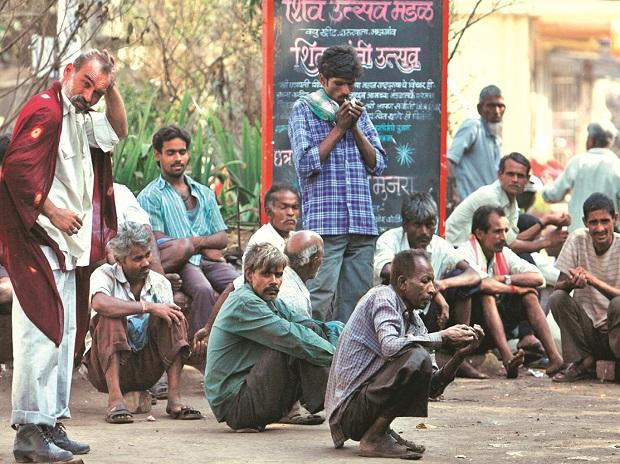[ad_1]
The labour markets have recovered to pre-pandemic levels in both the urban and rural areas, as seen from the supply-side and demand-side employment data given in the Economic Survey 2022-23, which was tabled by Finance Minister Nirmala Sitharaman in Parliament on Tuesday.
Depicting the supply-side situation of the labour market, the Periodic Labour Force Survey 2020-21 conducted by the National Statistics Office notes that the rate of unemployment fell from 5.8 per cent in 2018-19 (FY19) to 4.2 per cent in 2020-21 (FY21), whereas the labour force participation rate (LFPR) also improved for both males and females.
“There is a notable rise in rural female LFPR, from 19.7 per cent in FY19 to 27.7 per cent in FY21, whereas the LFPR for males has gone up to 57.5 per cent in FY21, compared with 55.6 per cent in FY19,” noted the Survey.
However, the Survey highlighted the measurement issues in calculating female LFPR. It said limiting productive work to labour force participation was narrow and only measured work as a market product.
“It does not include the value of women’s unpaid domestic work, which can be seen as expenditure-saving work, such as collecting firewood, cooking, tutoring children, etc, and contributes significantly to the household’s standard of living,” said the Survey.
Depicting the demand-side situation of the labour market — the quarterly employment survey (QES) conducted by the Labour Bureau — the estimated total employment in its latest and fourth round (January-March 2022) in nine selected sectors stood at 32 million. This is nearly 1 million higher than the estimated employment from the first round of QES (April-June 2021).
These nine sectors are manufacturing, construction, trade, transport, education, health, accommodation & restaurants, information technology/business process outsourcing and financial services.
“The increase in estimates of workers from the first quarter of 2021-22 (FY22) to the fourth quarter (Q4) of FY22 was driven by rising employment in sectors such as information technology/business process outsourcing (by 1.76 million), health (780,000), and education (170,000) due to rising digitisation and resurgence of the services sector economy. Regular employees constituted the majority of workers across sectors, with a share of 86.4 per cent in the total workforce in Q4FY22,” noted the Survey.
The Survey observed that the rise in employment opportunities was due to improvement and streamlining of the skilling ecosystem, along with reforms in the education sector like the New Education Policy 2020, which focuses on the integration of vocational education with general education and mainstreaming of vocational education.
Of the establishments employing at least 10 workers in the above mentioned nine sectors, the Q4FY22 QES mentions that 15.6 per cent of estimated establishments imparted formal skill training and 20.5 per cent on-the-job training.
The health sector had the highest percentage of estimated establishments imparting formal skill training (24.7 per cent) and on-the-job training (31.6 per cent), followed by financial services (20.4 per cent of establishments imparting formal training and 26.4 per cent on-the-job training).
The Survey also highlighted the share of expenditure on social services as a percentage of gross domestic product has increased from 6.6 per cent in 2015-16 (FY16) to 8.3 per cent in 2022-23 (FY23), whereas the expenditure on social services — as part of the total expenditure — increased from 24.3 per cent in FY16 to 26.6 per cent in FY23. The impact of this increased expenditure can be seen in the development made in all districts under the aspirational district programme.
“For instance, under health and nutrition, 46 districts have improved by up to 45 per cent, and 23 districts have improved by up to 69 per cent in critical indicators related to pregnant women’s health. Under education, 46 districts have improved by up to 34 per cent, and 29 districts have improved by up to 49 per cent in critical indicators which affect learning outcomes attained by students,” added the Survey.

[ad_2]
Source link



